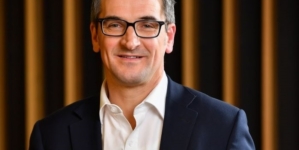-
BLACKOUT TECHNOLOGIES TARGETS TELEMATICS-INTEGRATED MOBILE DEVICE BLOCKING TO COMBAT SMARTPHONE DISTRACTION - 17 hours ago
-
OpenADR Alliance announces first OpenADR 3.0 certified products with EVoke Systems, E.ON Energy and Universal Devices - March 25, 2025
-
Growing fulfilment and contract packer appoints new Managing Director - March 25, 2025
-
When is it time to invest in a WMS? Understanding the key trigger points - March 25, 2025
-
eCapital helps Vantage Recruitment on its journey to financial success - March 24, 2025
-
Hugo Beck Celebrates 70 Years of Packaging Innovation with Open House Events - March 20, 2025
-
PROLOG FULFILMENT SUPPORTS LUNA DAILY’S COMMITMENT TO BETTER BODY CARE FOR ALL WOMEN - March 19, 2025
-
Motion Ventures launches largest-ever maritime tech fund at $100M to meet the industry’s new pace of adoption - March 18, 2025
-
ITD GLOBAL APPOINTS GROUP CHIEF REVENUE OFFICER - March 17, 2025
-
SURECAM TEAMS UP WITH ENTERPRISE FLEX-E-RENT FOR VEHICLE REPAIR & MAINTENANCE CONFERENCE - March 14, 2025
DataArt Retail & Distribution Technology Trends 2018:
Denis Baranov, Principal Consultant, DataArt
Consumers that prefer an omni-channel shopping and use of multiple screens, expect an outstanding customer experience across all the channels – mobile, Web, in-store, anywhere.
The biggest challenge for Retailers remains the ability to reach out to their consumers in real-time across all touch-points to deliver an outstanding customer experience. Retail marketers strive for getting cross-channel single customer view to anticipate the consumer’s needs and individual preferences and offer the products and services in a timely and individually tailored manner.
Thus, in 2018 technology will continue to serve three main objectives of the retailers:
How to acquire more consumers to beat competitors?
How to make interactions beneficial?
How to escape too much interaction?
In 2018, retailers will continue down the road to digitalization. This is being driven by growing e-commerce agendas of the leading players. Digital transformation, with the introduction of scalable agile techniques, would change not just IT landscape of retailers but their business model as a whole.
We can expect some exciting retail tech startups or solutions in the robotics space. Many retailers already use automation for their operations, and we can just assume there will be a rise of interest in this due to cost optimization.
At the same time, though, consumers are increasingly searching for personalized shopping experiences. Data analytics and machine learning can help retailers make their messages really personal. Using data to personalize customer experiences is just the beginning. Data analysis also plays a significant role behind the scenes, especially when it comes to inventory management and distribution.
The omni-channel strategy has significantly underperformed for more retailers than it was successful for. Those who are falling behind will need to invest in the technology to catch up and create a seamless experience for their clients across all channels.
Another point is that although brick-and-mortar shops have been proclaimed dead (again), they in fact seem to be morphing into something essential for the new consumer: showrooms. Customers enjoy the fact that they are able to try/test/touch products before making a decision. Combine that with access to really knowledgeable staff and traditional shopfronts might be revitalized. This however will require changes in supply change management strategies and will involve still more technology.
To sum up retailers need to be flexible, respond faster, and achieve synergy between on-line and off-line channels.
In a nutshell, to be competitive and innovative, retailers need to invest in new technologies.

































